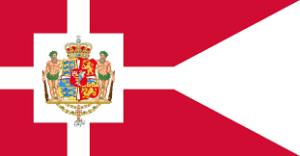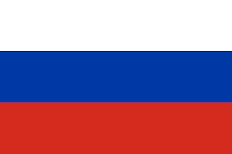Today’s world is largely governed by democracy and ensures constitutional rights to its citizens. The kings and queens we hear of hold little more than symbolic power.
But, that wasn’t always the case.
The European world, often applauded as a bastion of democracy today, was once ruled by absolute monarchies.
This method of governance was widely popular throughout the 18th century. Propagating the belief that kings and queens who ruled the land were messengers of God and that God created Monarchy, the royalty strengthened their power.
Let’s look at how the notion of absolute Monarchy swept through Europe and created dynasties and the eventual end of the Age of Absolutism.
Absolute Monarchy emerged in Europe and quickly became a popular form of governance where kings and queens of pure lineages ruled over various regions and cities of Europe.
This form of governance stemmed from the belief that the monarchs had complete control, that they held a “divine right,” and that opposing the Monarchy was akin to fighting God.
By the 16th century, absolute Monarchy spread like wildfire across Western Europe and seeped into the governance systems of the 17th and 18th centuries.
This idea of the “divine right of kings” became the foundation for the absolute Monarchy to flourish. This belief even justified dictatorial rule as a divine, mandated punishment meted out by authorities resulting from human wickedness.
Louis XIV’s proclamation “I am the state” is perhaps the best example of what an absolute monarchy stood for.
Louis XIV, a monarch who ruled France from 1661 to 1715, declared that he had complete control over all areas of the nation and was the state’s most significant and most powerful authority.
What Is An Absolute Monarchy?
An absolute monarchy is a form of governance in which a king or queen has absolute rule over a country or region. In an absolute monarchy, the power transfer is hereditary and can only be taken forward through the bloodline.
Absolute Monarchy came into prominence during the medieval period and prevailed in much of Western Europe throughout the 16th century, taking over countries like England, Spain, Austria, and Spain.
However, after the 1789-1799 French Revolution that gave rise to the idea of popular sovereignty or government by the citizens, the predominance of absolute monarchies dramatically decreased.
The Principles Of Absolute Monarchy
As likened to other forms of governance, absolute Monarchy follows a very different set of principles to establish and maintain its reign.
1. Divine Right
According to the doctrine of divine right, the monarch had complete freedom to do anything he pleased as long as it was in accordance with the will of God.
2. Absolute Power
Absolute power ensured that the monarch could make decisions without consulting anyone else, and he would be in charge of seeing that the decision was carried out.
3. Hereditary Transfer of Power
Absolute Monarchy establishes the hereditary power and life principle wherein the king’s eldest son upheld all the power until he passed away.
Centralized Administration
Centralized administration allowed the monarch to levy taxes on the populace to fund the upkeep of his army and ensure wealth accumulation.
4. Class System
The period of absolute Monarchy coincided with a time when the class system was prominent. Citizens were divided into high and low classes — the highest class was the clergy and the Monarchy, the bourgeois was the middle class, whereas the lowest class included the wage earners and peasants.
What Led To The Prominence Of Absolute Monarchy?
Absolute Monarchy mainly grew its roots from a strong belief in the king’s divine right to govern. This belief established that the people of the state had nothing to do with the monarchs’ power as they were granted their right to rule by God.
There are even stories of kings consuming blue potions to make their veins appear bluer than those of others, which further led to the myth that the kings had “blue blood.”
Another major factor that contributed to the rapid spread of absolute Monarchy was the successful conquests by countries like France and Spain that amassed massive amounts of riches in the form of silver and gold, proving the superiority of their absolutist systems.
This was also a period when the feudal system was in decline, and the battles of the feudal lords were ongoing. During this time, the countries’ territorial union was made possible by implementing concentrated power holds.
The governments established organized armies under the leadership of the king, not feudal lords, due to the need to combine enormous military forces. An example of this is the Hundred Years’ War that took place between France and the British Empire.
Europe had decentralized governments before the all-powerful rulers. The people were terrified of the Vikings and other “barbarian” invasions.
All of these factors created ideal conditions for all-powerful monarchs to emerge.
How Absolute Was This Form of Governance?
Absolutism in Europe depended on the state. For instance, Poland, England, and The Holy Roman Empire were less absolute as these monarchs worked together with the parliament. The people, too, were granted a lot of freedom, and there were some limitations on the ruler’s power.
In states like Russia and Spain, absolutism was “moderate” at best.
On the other hand, countries like France and the Ottoman Empire followed strict absolutism. Their rulers had absolute control over these states, and the rigid belief in the divine right to rule was commonly used to control the people.
For example, Louis XIV, the King of France, also known as “The Sun King,” can be considered the flagbearer of absolutism. He believed he was a direct representative of God and pictured himself as the sun gazing down on Earth — an apt metaphor for his reign as a monarch with complete control over his nation.
Countries In Europe That Followed Absolute Monarchy:
Absolute Monarchy reigned over various regions of Europe for hundreds of years. Numerous European kings asserted their absolute authority by divine right.
Here are some of the major absolute monarchies in Europe.

Denmark- Norway
In 1665, the King’s Law (Kongeloven) mandated that the monarch shall be highly regarded and deemed the most flawless and ultimate person on Earth by all his subjects, standing above all society’s laws and needing no judge above his person, neither in divine nor temporal matters, except God alone.
As a result, the king was given the go-ahead to eliminate all other power structures. Most significant was Denmark’s decision to abolish the Council of the Realm.
Absolute Monarchy prevailed until 1848 in Denmark and 1814 in Norway

Russia
The Russian Tsars and emperors presided as absolute monarchs until 1905. Ivan the Terrible was infamous for his oprichnina terror rule.
By building a bureaucracy and a police state, Peter the Great diminished the influence of the Russian aristocracy and increased the monarch’s absolute power.
Russia was the last European country to abolish absolutism, which only happened after the Russian Revolution.

France
The French Monarchy was perhaps the most affluent and influential regime. The French King Louis XIV (1638–1715) ruled over France for a protracted period, and some historians view him as a successful absolute king despite being frequently condemned for his splurges, such as the Palace of Versailles.
The French Monarchy centralized the country’s executive, legislative, and judicial authorities, making the king the highest court official. As the people did not even have the option to appeal, the monarch also held power to execute people.
The monarch was responsible for both punishing offenders and preventing future offenses. Enacting laws and tearing them down were part of his judicial authority.
England and Scotland
James VI and I, along with Charles I, his son, attempted to introduce the idea of divine right in Scotland and England.
Although Charles I did govern in an absolutist way for 11 years, beginning in 1629, after briefly disintegrating the English Parliament, his attempt to impose priestly politics on the Church of Scotland sparked revolts among the Covenanters and the Bishops’ Wars.
Later, concerns that Charles I was trying to establish an absolutist government significantly contributed to the English Civil War.
Absolute Monarchy Today:
While the majority of European nations do not practice absolute Monarchy today, some countries continue to have constitutional monarchies.
However, Vatican City is the only country that still has an absolute monarchy with the Pope as the monarch.
Outside of Europe, nations like Oman and Saudi Arabia continue to uphold the absolute monarchy principle.
The Age of Absolutism is a prominent period of history that shaped many of our current governance systems. Although the royalty justified their authority and power, they faced many challenges too.
With modern administration gaining hold in most of the world, it is expected that the few nations that continue to practice monarchial rule will also shift to a more democratic form of governance.
ALSO READ: What Were The Twelve Tables Of Rome?